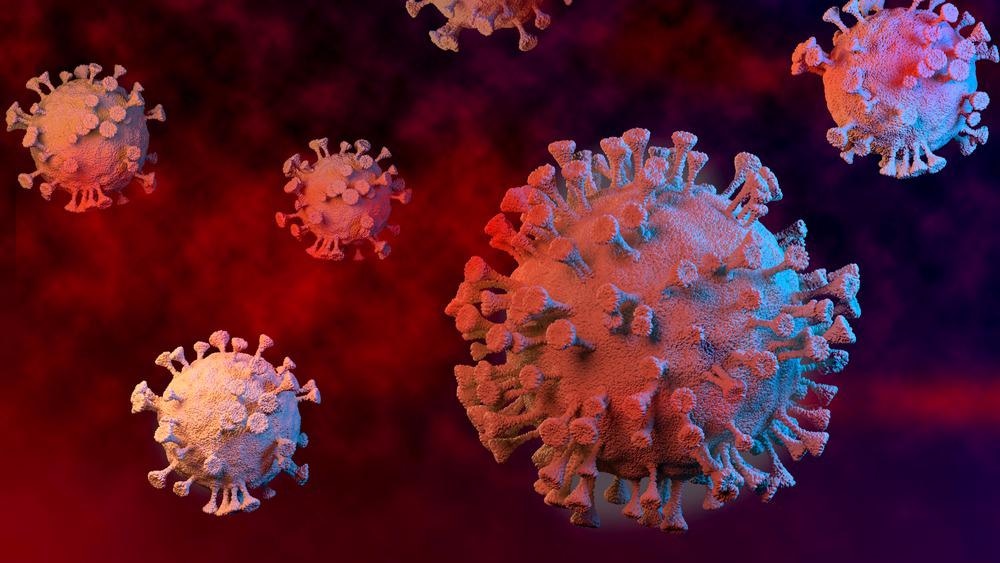Scientists throughout the world have worked at an unprecedented speed to develop vaccines against the severe acute respiratory syndrome coronavirus 2 (SARS-CoV-2), which is the causal agent of the ongoing coronavirus disease 2019 (COVID-19) pandemic. To date, all available COVID-19 vaccines have been developed against the spike (S) protein of the ancestral SARS-CoV-2 strain, which was reported for the first time in Wuhan, China, in late December 2019.

Study: The magnitude and timing of recalled immunity after breakthrough infection is shaped by SARS-CoV-2 variants. Image Credit: Sergey Cherviakov / Shutterstock.com
Background
Previous studies have shown that COVID-19 vaccines effectively reduce the risk of severe COVID-19. This protective effect is provided by neutralizing antibodies that inhibit the binding of SARS-CoV-2 to the host cell. Nevertheless, these studies have also reported a decline in antibody titers with time.
The incidence of breakthrough infections has increased due to the ability of SARS-CoV-2 variants to escape from neutralizing antibody recognition, which has reduced the efficacy of current COVID-19 vaccines considerably. However, vaccine-elicited immunity continues to provide robust protection against severe disease outcomes.
After the first week of SARS-CoV-2 infection, the ribonucleic acid (RNA) viral load peaks in the upper respiratory tract of both vaccinated and unvaccinated individuals. Unlike unvaccinated individuals, vaccinated individuals typically exhibit a rapid clearance of viral RNA in the second week of infection.
A comparable viral load has been observed in both unvaccinated and vaccinated groups during the first week of infection, which implies that previously existing antibody or T-cell immunity was unable to inhibit viral replication in the respiratory tract. Despite the recall of SARS-CoV-2-specific antibodies, memory B- and T-cell responses after breakthrough infection could affect viral clearance and influence the severity of the disease.
Researchers believe that the extent of immune recall depends on a specific viral strain. For instance, the efficacy of the vaccine was found to be reduced if it elicited antibodies with less cross-reactive recognition against antigenically distant variants, such as the SARS-CoV-2 Omicron variant.
A thorough understanding of the mechanism behind the effectiveness of recall responses, which reduces the severity of infection, is extremely important for the optimal deployment of COVID-19 vaccines. This information could also help in the design of future COVID-19 vaccines to ensure their ability to provide ideal protection against severe infection.
Study findings
In a recent Immunity study, scientists perform an extensive longitudinal sampling of seropositive individuals after COVID-19 vaccination to investigate the sequence and dynamics of recalled immune memory with respect to the S protein of the original strain of SARS-CoV-2. Herein, the researchers also collected data from vaccinated individuals following breakthrough infection with the Omicron and Delta variants.
After COVID-19 vaccination of convalescent individuals who were infected with the ancestral strains of SARS-CoV-2 (Hu-1 or D614G), the phenotypic activation of S-specific memory B-cells overlapped with the rapid enhancement of antibody-secreting cells (ASCs) after the third day of vaccination. Five days after vaccination, an increase in antigen-specific T-cells was observed in the blood. Thus, the serological titers of both binding and neutralizing antibodies were elevated after the fifth day of COVID-19 vaccination.
Antibody levels remained stable for at least thirty days after antigen re-exposure. Additionally, an enhanced rate of antigen-specific memory B-cells was observed.
Although the antibody recall pattern remained relatively uniform following vaccination, it differed in its magnitude and timing following breakthrough infection of COVID-19 vaccinated individuals. This is attributed to the characteristic heterogeneity of viral replication and the timing of symptom manifestation between individuals. It also reflects the antigenic and virological differences between SARS-CoV-2 variants.
The timing of exposure and antibody recall appears to be dependent upon the SARS-CoV-2 variant. For instance, antibody recall after Delta breakthrough infection occurred seven to eight days after exposure, whereas a modest antibody recall of ancestral Hu-1 spike immunity was observed following infection with the Omicron variant. However, an enhancement in the neutralizing responses was delayed when compared to the Delta variant by seven days and binding antibodies by four days.
Interestingly, the current study revealed that the viral load peaked about a day before antibody recall during Delta breakthrough infections. Furthermore, breakthrough infection with the Delta strain in vaccinated individuals was attributed to the re-expansion of humoral immune memory, along with a high level of neutralizing antibodies. This finding strongly suggests that recall of immunity may ultimately reduce the severity of breakthrough infection.
Limitations
One of the key limitations of this study is the significant age difference between the seronegative and seropositive candidates. Additionally, owing to the frequent change in the dominantly circulating strains, as well as vaccination status, analysis of the early kinetics of vaccine breakthrough infections was challenging.
Taken together, a larger study cohort is required to draw a stronger conclusion regarding the potential contributors of breakthrough recall kinetics and magnitude. A larger study cohort would also elucidate the exact role of T-cells in alleviating disease severity of breakthrough infections.
Journal reference:
- Koutsakos, M., Lee, W. S., Reynaldi, A., et al. (2022) The magnitude and timing of recalled immunity after breakthrough infection is shaped by SARS-CoV-2 variants. Immunity, doi:10.1016/j.immuni.2022.05.018.